NYC’s Forgotten ‘War on Christmas Trees’
Discover how an obscure holiday crackdown affects festive street vendors today!


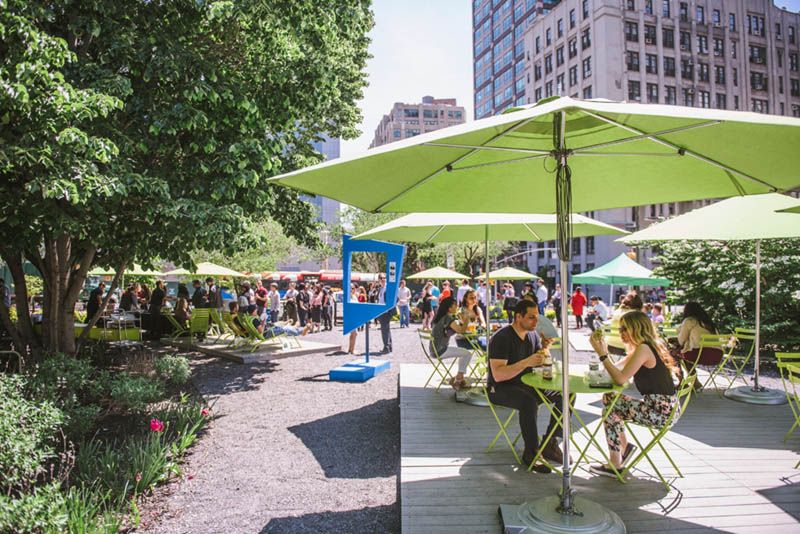
Photo courtesy Hudson Square Connection
If you’ve ever walked around SoHo, maybe perusing the stores along Prince Street or Houston, then you’ve more than likely stepped foot into the bustling neighborhood known as Hudson Square. Originally the city’s Printing District, Hudson Square encompasses the area from Canal Street to West Houston and 6th Avenue all the way to West Street. Despite its close proximity to SoHo and relatively small size, Hudson Square is a unique area distinguished by its historical significance, from a 200-year old bar to George Washington’s former headquarters.
In addition, the neighborhood maintains a thriving cultural space marked by inviting outdoor gathering spaces, art galleries and modern architecture, as well as fantastic restaurants, trendy coffee shops, and eclectic bars. Conveniently, this fun, thriving area is extremely accessible by subway, so make sure to check our these 20 must-visit places if you ever find yourself in Hudson Square:
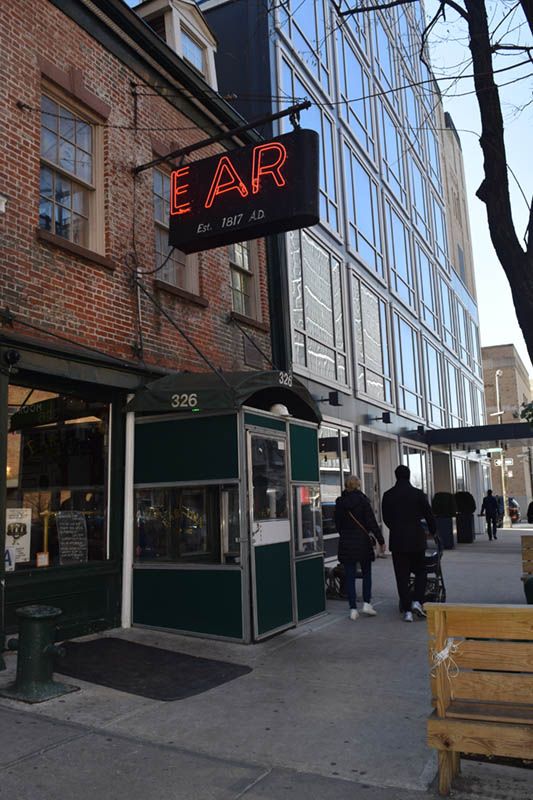
Photo courtesy Hudson Square Connection
This historic establishment was originally built in the late 18th century as a home for James Brown, an African-American veteran of the Revolutionary War, aide to George Washington, and proprietor of a tobacco store housed on the ground floor. After changing hands during the early 1800s, the two story townhouse was eventually turned into a tavern and is now recognized as one of the oldest existing bars in New York City.
The Ear Inn has gone through many changes over the years, from tobacco store and home to tavern, brewery, restaurant, then during Prohibition to a speakeasy, brothel, boarding house, and smuggler’s headquarters, and finally to the bar it is today. Purchased in the 1970s by a group of artists, the bar took on the name of The Ear Inn due to restrictions on altering historic buildings. The owners simply painted out part of the “B” in the bar sign, turning it into the word “Ear,” which also happened to be the name of a music magazine published upstairs. Location: 326 Spring St., New York, NY 10013.
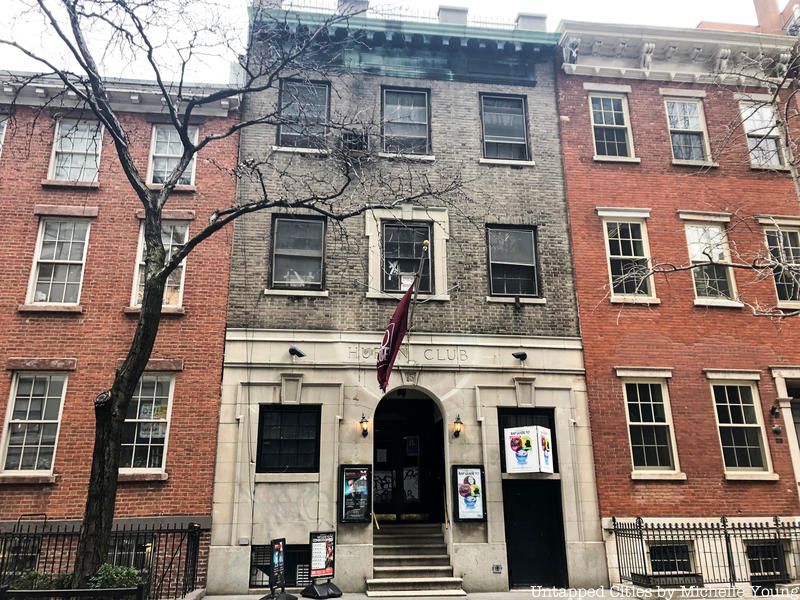
The playhouse occupies the land on which once stood Richmond Hill, a colonial mansion built in 1767 and owned by British Major Abraham Mortier. It served as the headquarters for many historic figures, including Lord Jeffrey Amherst, George Washington, and Sir John Temple, as well as the official residence of John Adams and later of Aaron Burr.
The estate was later sold to businessman and real estate giant John Jacob Astor, who then opened the house and its gardens as a public resort in 1822. From then until its demolition in 1849, the mansion served as a theater, Italian opera house, and a saloon. In the later 1800s, 15 Vandam Street, the location of the current playhouse, was designated as The Huron Club and meetinghouse of Tammany Hall. Finally, into the 20th century, the location housed a speakeasy and theater, the Playwrights Unit Workshop, the independent cinema Film Forum, and is now home to the Off-Off Broadway theater SoHo Playhouse. Location: 15 Vandam St., New York, NY 10013.

The Charlton-King-Vandam area encompasses parts of the three streets between Avenue of the Americas and Varick Street as well as the streets bounded by King, MacDougal, and Houston Streets and Sixth Ave. Recognized as a Historic District and New York City Landmark, the area was once part of the Richmond Hill estate.
The district is recognized largely for its exceptional architecture, which features row houses built in the Federal and Greek Revival styles. Charlton and Vandam Streets display the majority of these houses, while King Street showcases Roman Revival style houses as well as the former Public School 8 built in 1886. Location: roughly the streets bounded by Vandam, Varick, West Houston, MacDougal Streets and Sixth Ave.
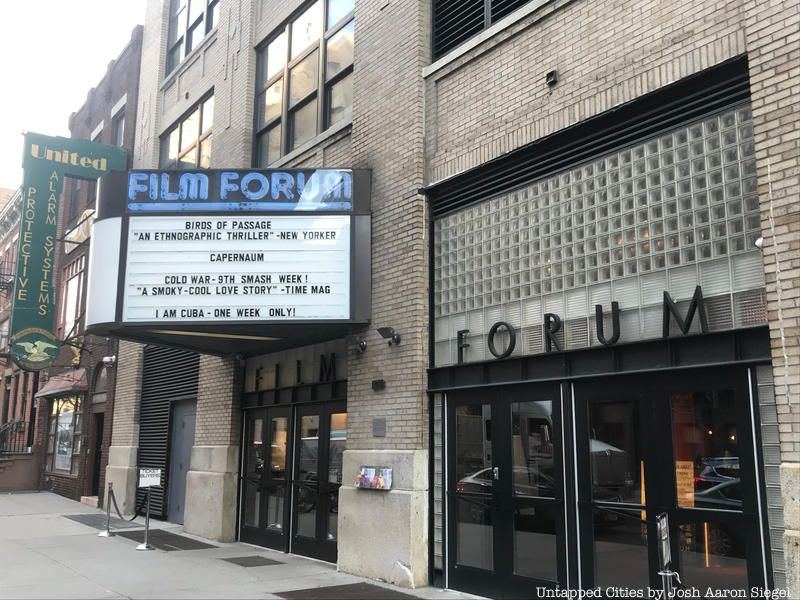
Almost 50 years old, Film Forum is a widely recognized alternative screening space for both independent American films and foreign art films. When it first opened in 1970, it was actually located on Vandam Street on the site of the former Richmond Hill and what is now the current SoHo Playhouse. It was a small space with only one projector, a couple dozen folding chairs, and a meager budget.
Now, located on West Houston in a cinema built in 1989, Film Forum has three screens, over 400 seats, and is the only autonomous nonprofit cinema in New York City. The cinema still presents two distinct programs — American independents and foreign art films — but now also includes classics, genre works, festival pieces, and a third screen for extended runs of popular selections. Location: 209 W Houston St., New York, NY 10014.
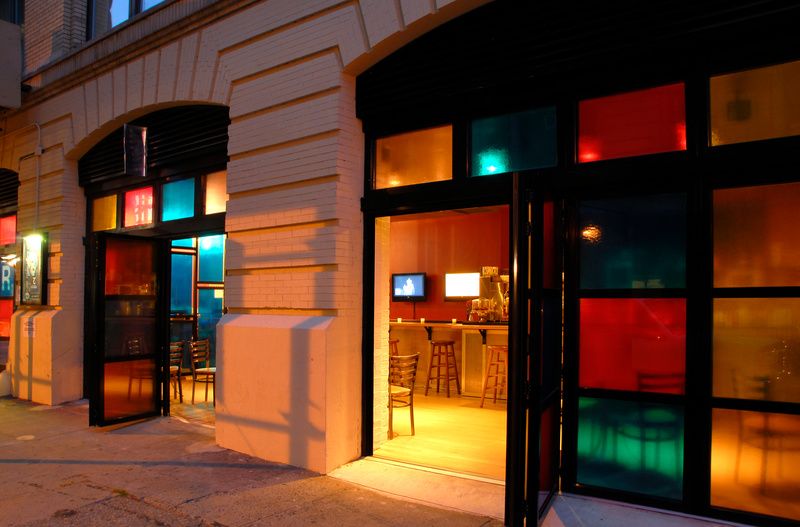
Photo courtesy HERE Arts Center
Started in 1993, HERE Arts Center is a multidisciplinary performance and arts space that specializes in nurturing and showcasing “hybrid” art. From programs and residencies to exhibitions and live performances in theater, dance, music, puppetry, media, and visual art, the center supports that which is contemporary and experimental. It has supported artists such as Eve Ensler, who produced The Vagina Monologues, and Young Jean Lee, writer of the play Songs of The Dragons Flying To Heaven.
As much as the center aims to support its emerging and mid-career artists, it also aims to involve the community and public surrounding it. The physical space includes a proscenium-style theater with 63 seats and eight stools, a black box theater that seats up to 150, an exhibition space, and a lounge, all of which serve as entry points to art. All are utilized to involve the public, from work-in-progress showings and workshop productions to postshow artist talkbacks and informal discussions. Current and upcoming productions in April and May include Symphonie Fantastique, a performance in puppetry, music, dance, and abstract art, Assembled Identity, a duet of music and live cinematography, and The Diana Tapes, a play about one of the greatest media scandals in British history. Location: 145 6th Ave., New York, NY 10013.
Named for the Italian-style single espresso shot, this café remains faithful to the traditional standard of 7 grams of coffee per cup. Most coffee shops make their espressos with 18 to 20 grams of coffee because, let’s be honest, New Yorkers love and need that extra caffeine. However, according to Taralliucci E Vino founder Luca Di Pietro, this practice results in an over-extracted and immensely bitter espresso (and the jitters!).
Seven Grams does espresso right: using exactly 7 grams, brewing it immediately in front of you, and ensuring that the seal of freshness, the “crema” formed on top, is always there. Their in-house, freshly made baked goods are also worth a visit, particularly the cheese burekas, cinnamon twists, raspberry financiers, and flourless brownies. Location: 175 Varick St., New York, NY 10014.
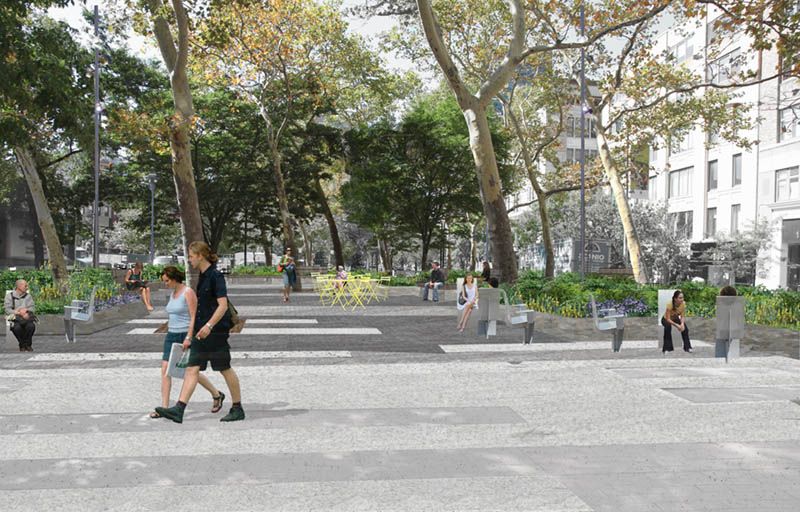
Rendering courtesy Hudson Square Connection by Mathew Nielson Landscape Architects
The reconstruction of this park, located at the corner of Spring St. and Sixth Ave., began in April 2017 and is expected to open to the public this September 2018. The redesign, led by the business improvement district Hudson Square Connection (HSC) and NYC Parks, will feature increased seating, expanded planted areas, more energy-efficient lighting, enlarged permeable areas for rainwater absorption, and a relocation of the 1997 General Jose Artigas monument to a more prominent, central location in the park.
Though closed to the public at the moment, a new banner was unveiled on the site’s fence which was designed by students from the Chelsea Career & Technical Education High School. The park, which has been untouched since the 1970s, will be revitalized into an inviting and sustainable outdoor space. Location: The corner of Spring St. and 6th Ave.

Photo courtesy Hudson Square Connection
The two plazas, Freeman Plaza East and West, are located on either side of the Holland Tunnel and are bounded by Hudson, Broome, Varick, and Watts Streets. Owned by the Port Authority (PANYNJ), the plazas are open from 8:00AM to dusk during weekdays to accommodate Hudson Square’s thriving community.
Renovated through a partnership with the Hudson Square Connection (HSC) and opened in 2014, the spaces serve as outdoor gathering area marked by trees (gasp!), tables, umbrellas, chairs, and even solar-powered cellphone charging stations. Freeman Plaza East is also home to “Octetra,” a world-renowned sculpture created by Isamu Noguchi. Previously exhibited near the Spoleto Cathedral in Italy and in the Pace Gallery in New York, “Octetra” is 12,000-pound, over seven feet tall, red, geometric sculpture. Location: Entrance on 180 Varick St., New York, NY 10014.
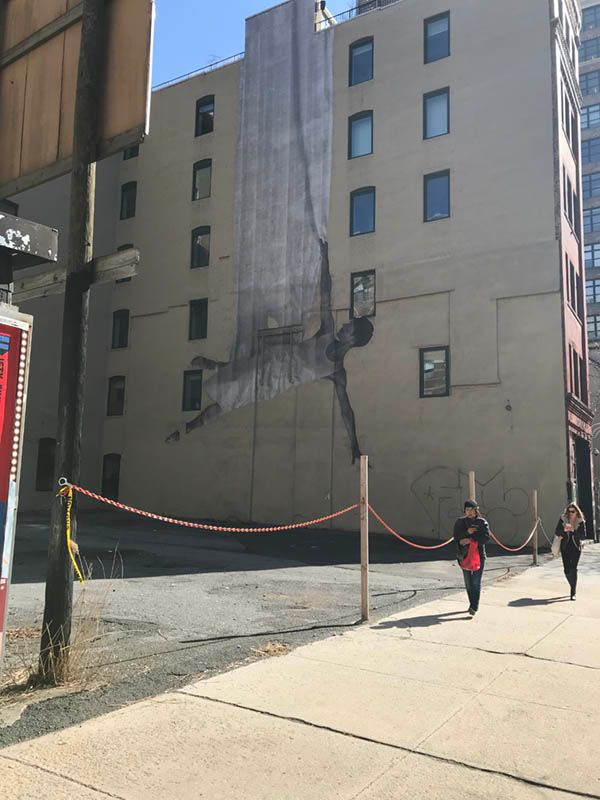
Photo courtesy Hudson Square Connection
If you stand on the corner of Spring and Hudson and look south, you’ll see a parking lot framed by an L-shaped building and an enormous black and white mural emblazoned on its side. The mural, made by the French artist JR, features a dancer gliding down the building, arms outstretched, and trailing a large piece of fabric behind her. Rather than falling, the figure appears to be suspended in mid-air, perfectly balanced as she simultaneously reaches for the ground and glances toward the sky.
JR, self-described as a photograffeur, is known for flyposting large black and white photos in public spaces, such as the dancer on 290 Hudson Street. His other notable works around the city have included murals on 23rd Street, 18th Street, Thompson Street, the Grand Concourse in the Bronx, North and South Williamsburg in Brooklyn, Redhook and DUMBO in Brooklyn, Sunnyside in Queens, and Staten Island. His installations are not only impressive in size, but are powerfully expressive and usually invoke elements of social action. Location: The corner of Spring and Hudson Streets.
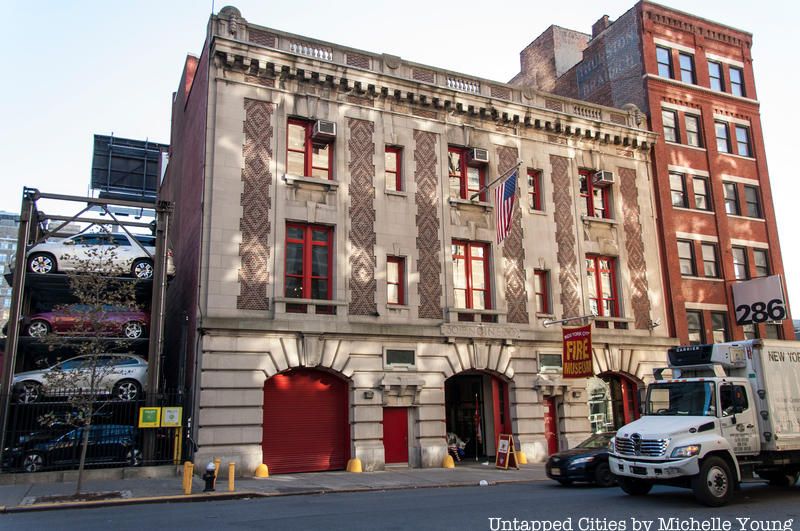
The current location of the New York City Fire Museum opened for the public in 1987 and occupies the renovated former quarters of Engine Company No. 30, a 1904 Beaux-Arts style firehouse. Originally, the FDNY museum was opened in 1934 in Long Island City under the name of the Fire College Museum. The collection then moved in 1959 to a working firehouse on Duane Street in Manhattan and, following an influx of memorabilia in 1981, was subsequently relocated to its current Spring Street space.
The museum aims to preserve and display the historical artifacts related to fire service in the city, as well as provide fire prevention and safety education to all members of the public. The extensive collection traces the history of firefighting techniques and equipment, from the bucket brigades of the 18th century to today, and houses a 9/11 memorial to the 343 FDNY members who died in the line of duty. Today, the museum is one of the largest fire-related collections in the world, with over 10,000 objects and an archive of tens of thousands of photographs. Location: 278 Spring St., New York, NY 10013.
Founded in 1988, the Children’s Museum of the Arts (CMA) occupied a facility on Lafayette St. and later a loading dock west of SoHo before moving to its permanent location on Charlton Street in 2011. This state-of-the-art facility, designed specifically for the museum and its goals, serves as an arts and community center for hundreds of thousands of children and families. In addition to being an inclusive, creative space, the CMA’s mission is to “introduce children and their families to the transformative power of the arts by providing opportunities to make art side-by-side with working artists.”
The museum houses a permanent collection of over 2,000 pieces of artwork created by children from around the world as well as temporary exhibitions by established artists. It also offers a range of classes and activities designed to engage the community, including WEE art classes for children 5 and under, studio activities, after school classes, family studios, private lessons, and day camps. The CMA aims to make art available to all, regardless of means or ability, through free community programs and accessible art classes. Location: 103 Charlton St., New York, NY 10014.
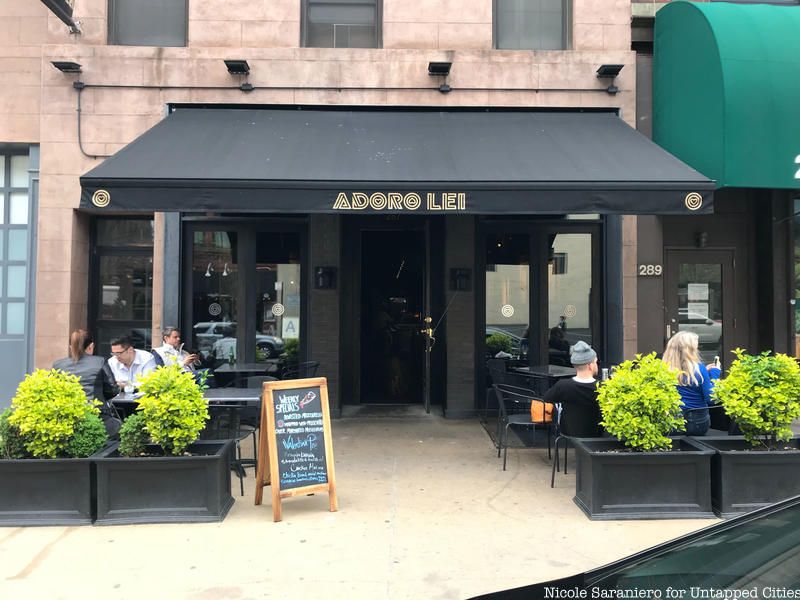
Described as an upscale pizza party, Adoro Lei landed on the downtown New York City food scene in 2015 and has since been known for its Neapolitan pizzas, cocktail menu, DJs, and custom wall art. The restaurant was launched by entrepreneurs Rick Froio and Joseph Primiano and Creative Director Michael DiBugnara, who worked with artist Dessie Jackson to create the signature paintings that adorn the interior space.
The menu features a combination of Italian and American dishes – salads, truffle rice balls, paninis, cast iron entrees, pastas, and calzones — but it is the pizza that demands attention. There are two types to choose from: the wood-burning Neapolitan pie or the brick-oven NY style pie. Of the former, there is the “Paulo” (ricotta, ham, zucchini, and fresh mozzarella), the “Niccolo” (tomato, imported soppressata, basil, toasted fennel seeds, and fresh mozzarella), the “Isabella” (tomato, artichoke heart, mushrooms, pecorino, sun-dried tomato, oregano, and fresh mozzarella), the “Cesare” (prosciutto, brie, smoked mozzarella, and roasted walnut puree), and many others. The NY style pies are more familiar and customizable, with traditional, white, vodka, and margherita bases and a variety of meat and vegetable toppings. Location: 287 Hudson St., New York, NY 10013.
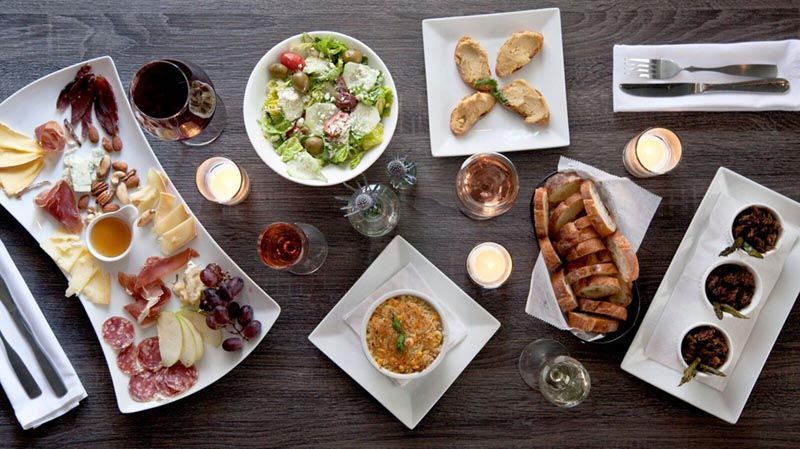
Photo by Jean Paul Gomez courtesy Hudson Square Connection
High-end wine bar, Local & Vine, is the go-to gathering place for oenophiles, whether they want to drink local wines by the glass or bottle. Housed in an 1880’s building (previously the venue for Saturday Night Live after parties), it offers a “relaxed yet luxe” environment for happy hours.
The array of local wines, craft beers and local ciders are also complimented by a food menu crafted by chef Lindsay Smith Anton, and featuring pairings by Alex Clifford, the former sommelier at Michelin-starred Italian restaurant, Marea. Dishes include a Truffle Mac and Cheese, Roasted Octopus with Arugula, and Raclette with Roasted Potatoes and Charcuterie. Location: 282 Hudson St., New York, NY 10013.
Ellen Christine Couture is where you can find high-end designer hats of all shapes and sizes. Specializing in one-of-a-kind pieces and accessories for both men and women, this showroom and studio is when dreams are envisioned. Since graduating design school in Boston and pursing a Masters and Doctorate in costume history at New York University, Ellen Christina has made it her mission to ensure that there are “No More Naked Heads.”
This not-so-humble goal gave rise to Ellen Christine Couture, where costume history is the focus. Even if you’re not in the market for an extravagant bridal cap or showpiece to impress your friends, you can still see the creation process behind Ellen Christine Couture’s headpieces. Just book an appointment, and stop by to see magic happen. Location: 99 Vandam St #4E, New York, NY 10013.
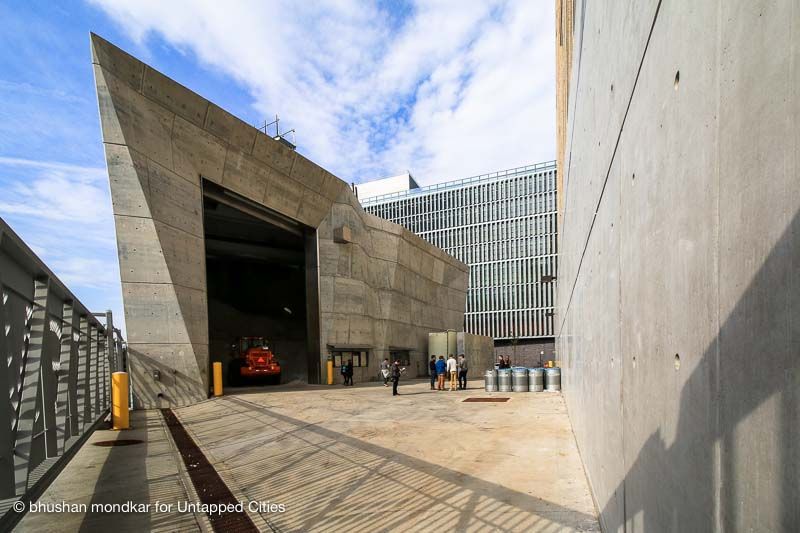
Last year, we had a chance to visit the New York City Department of Sanitation (DSNY)’s garage and salt shed complex in Hudson Square, Tribeca. Designed by WXY architecture + urban design and Dattner Architects, it currently serves 300,000 residents in Manhattan Community Districts 1, 2, and 5, and has been rewarded for for its excellence in environmental sustainability.
Adjacent to the garage building is a 70-foot, architecturally stunning, crystalline shaped salt shed. With a price tag of $20 million, this 5000-ton capacity shed has a few fascinating features that distinguish it from the other salt sheds around the city that are stocked throughout the winter. While the salt crystal shape of the structure is a remarkable piece of public art that puts all other salt sheds to shame, the unorthodox design actually stems from engineering work. The walls of the shed are taller on the side facing the water, allowing for the salt to settle at its natural slanted angle of 32 degrees, also called angle of repose. This unique way of storage allows for trucks to drive up one side, dump salt more conveniently onto the mound, which will then settle in its own stable way.
Furthermore, the doors of this first fully enclosed shed of DSNY are a whopping 35 feet tall and 24 feet wide, allowing for easy access for trunks moving in and out of the shed. The interior walls are lined with metal plating to prevent damage from the constant stream of trucks. With six-feet thick walls, it’s also safe to assume that no severe storm will be damaging the building and tarnishing the salt. Read more about the salt shed and garage here. Location: 336 Spring St., New York, NY 10013.
Next, check out our must-visit guides to Chelsea, Washington Heights and Bushwick.
Subscribe to our newsletter